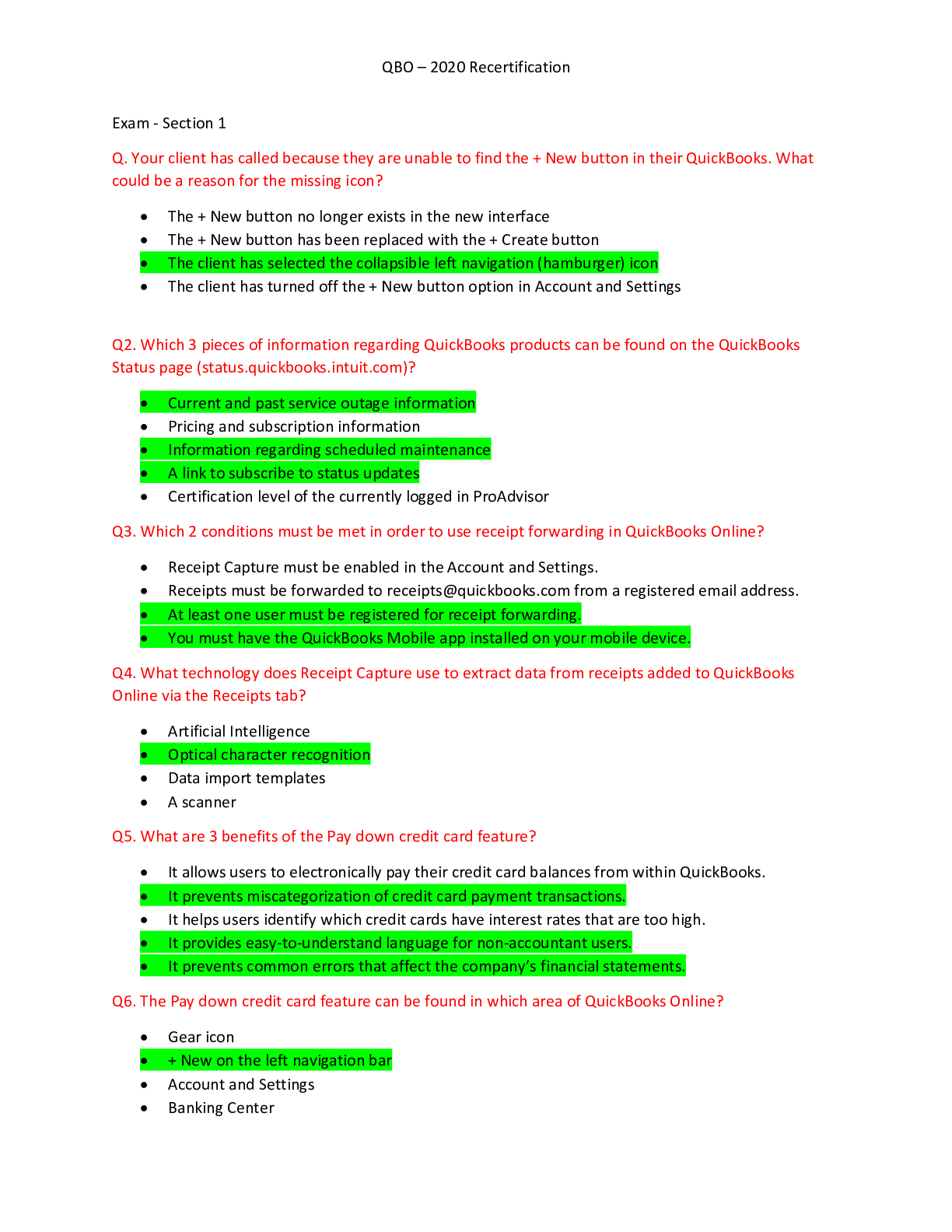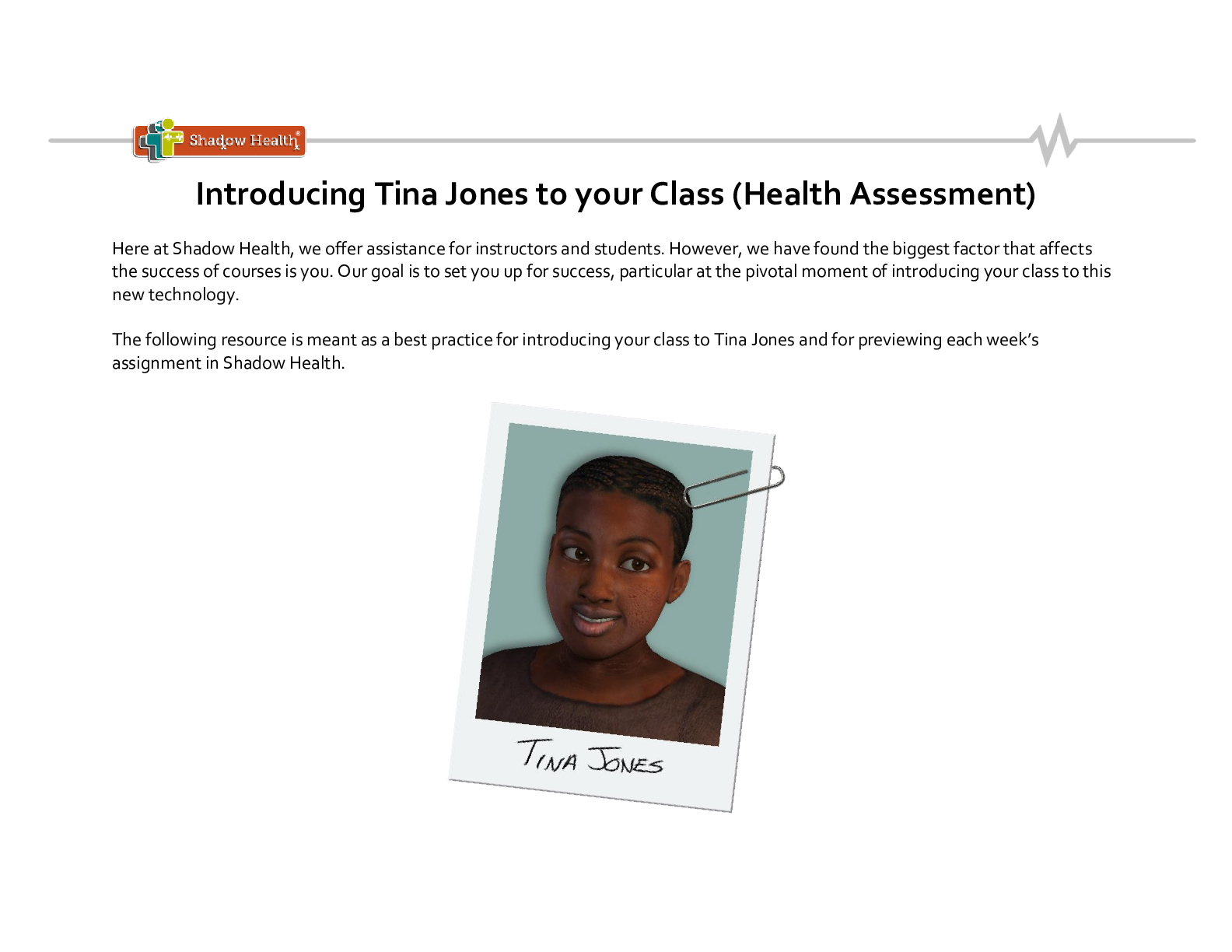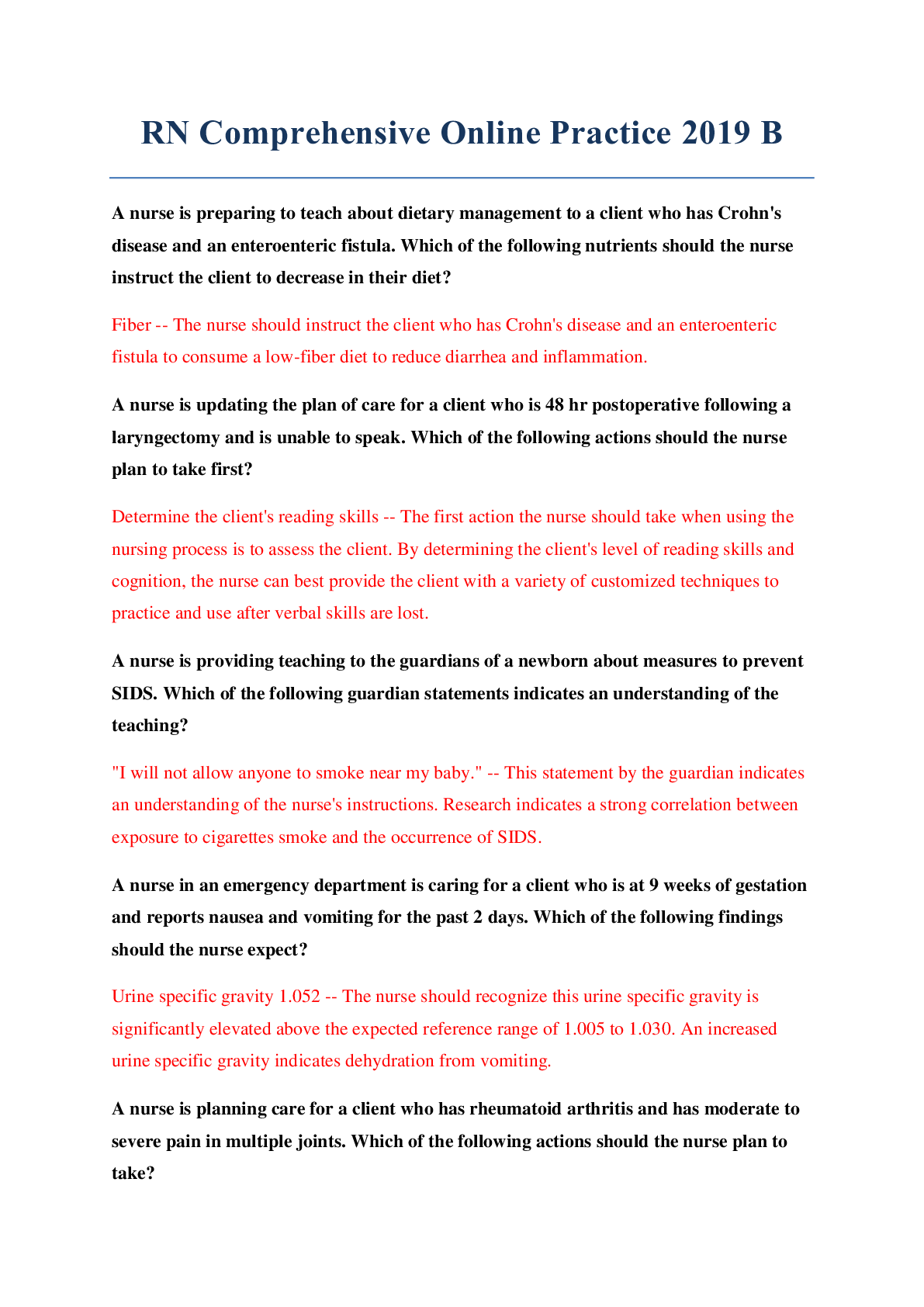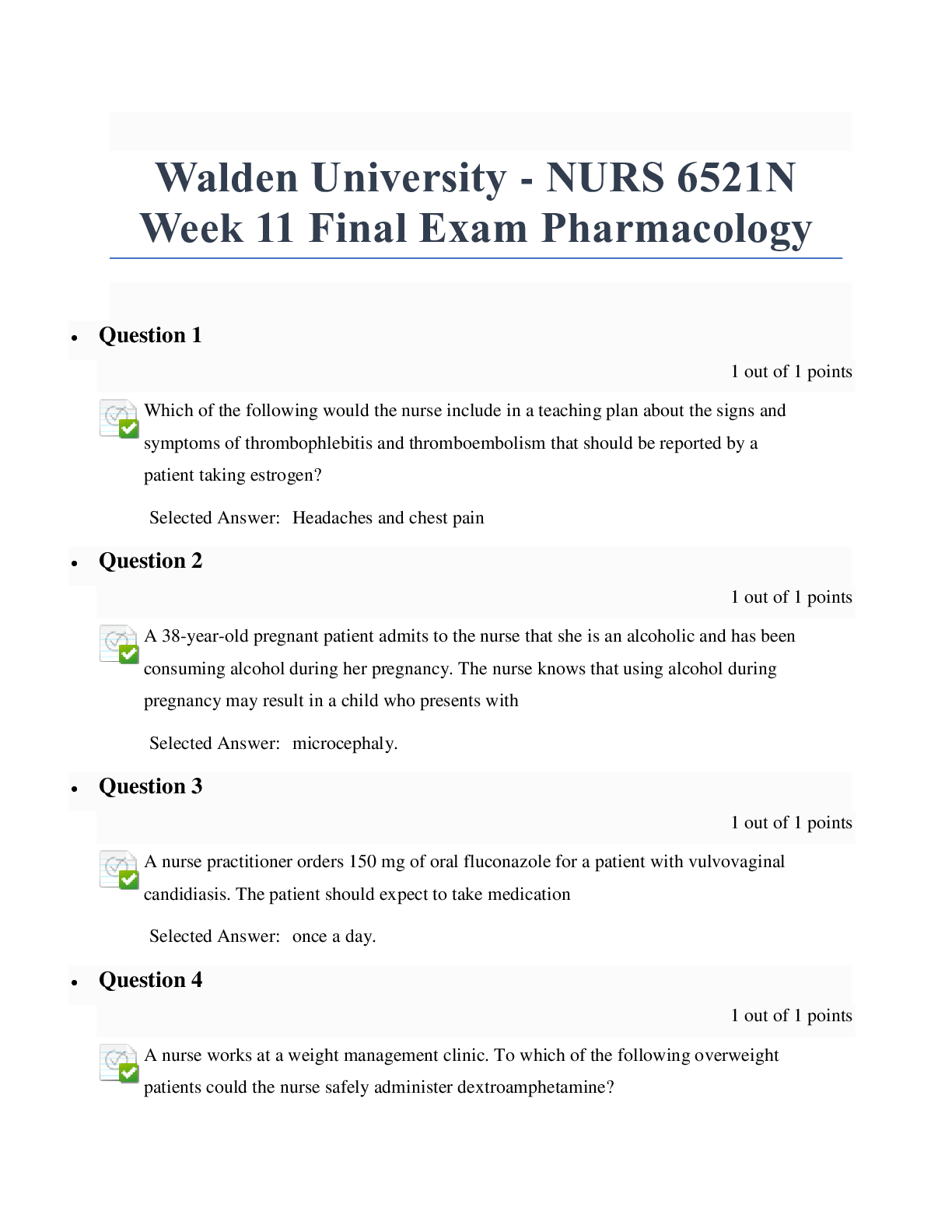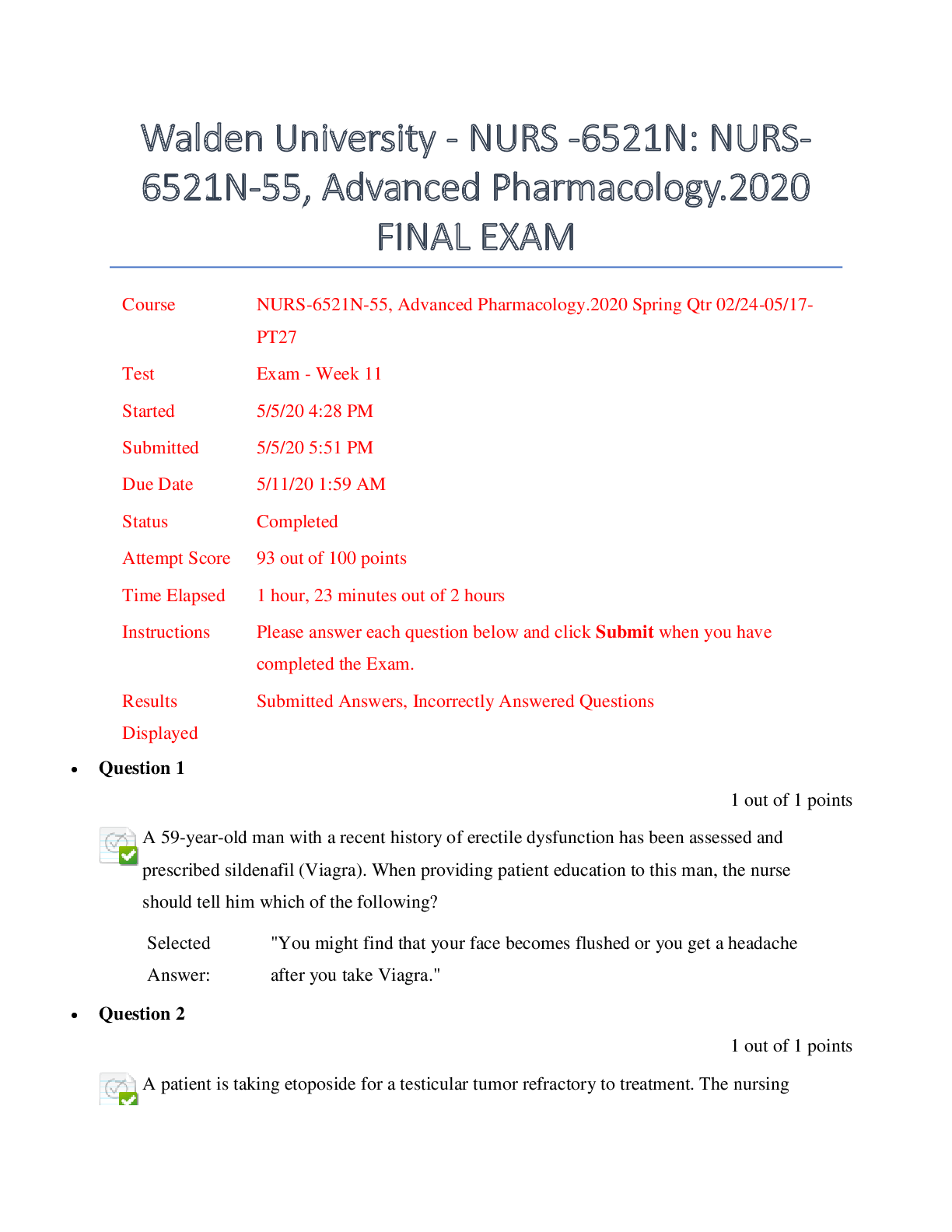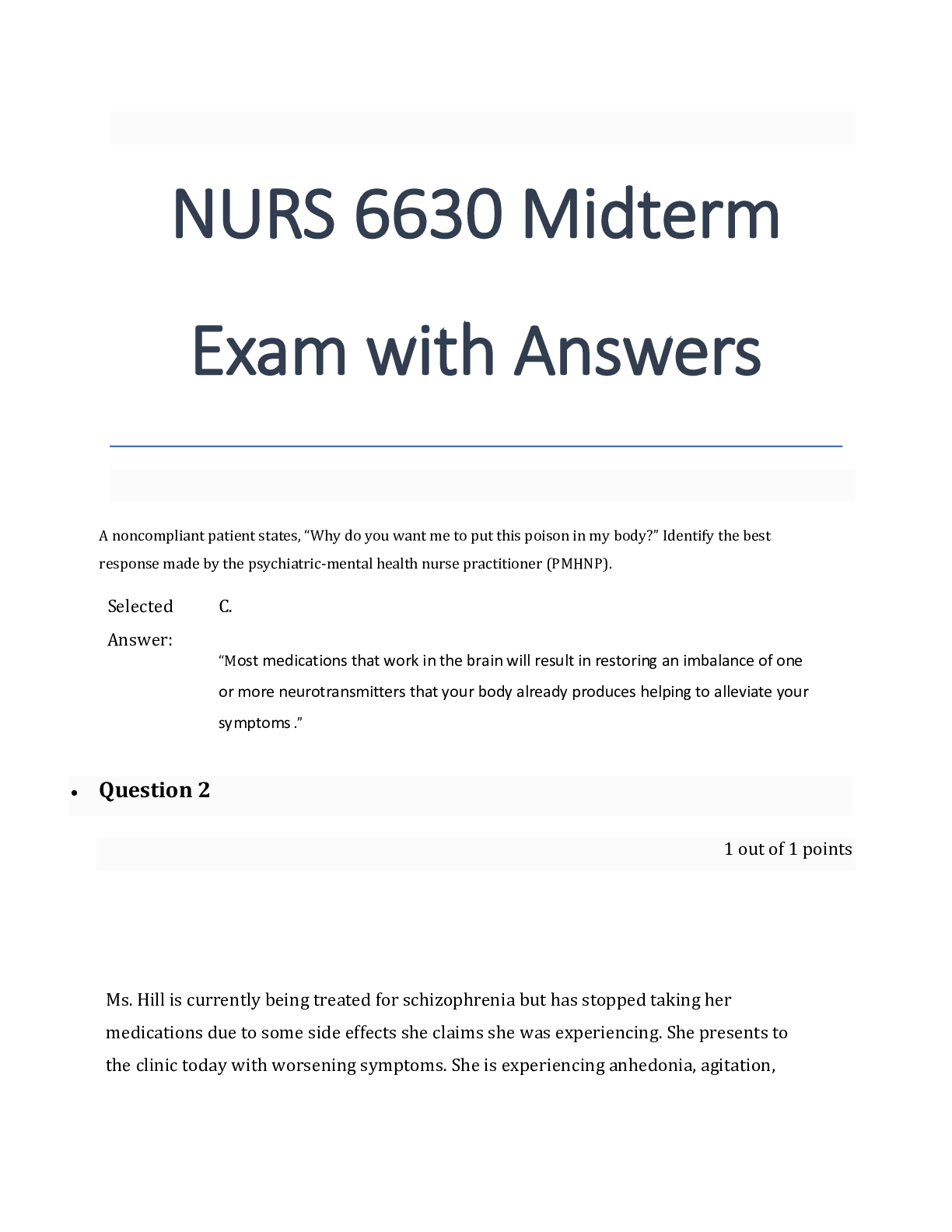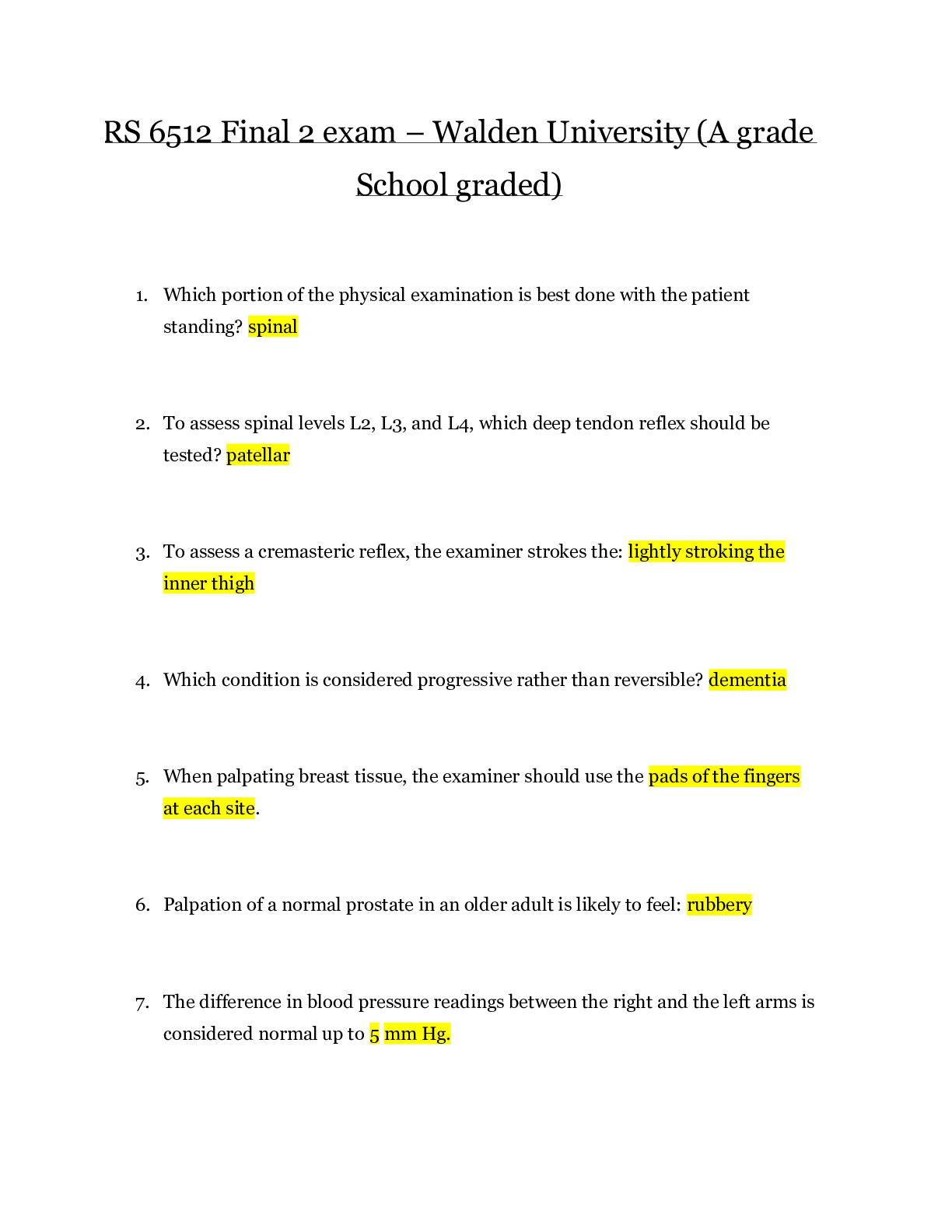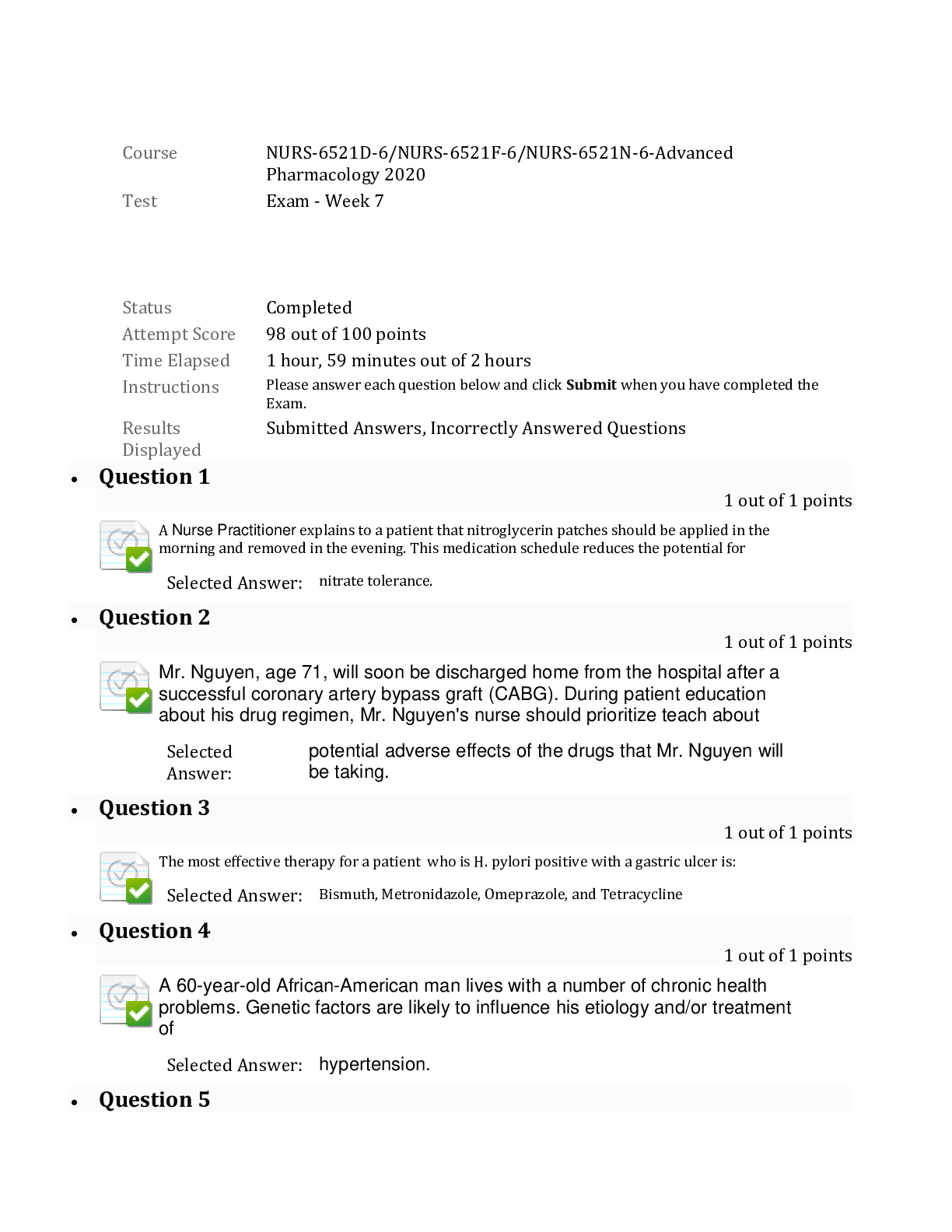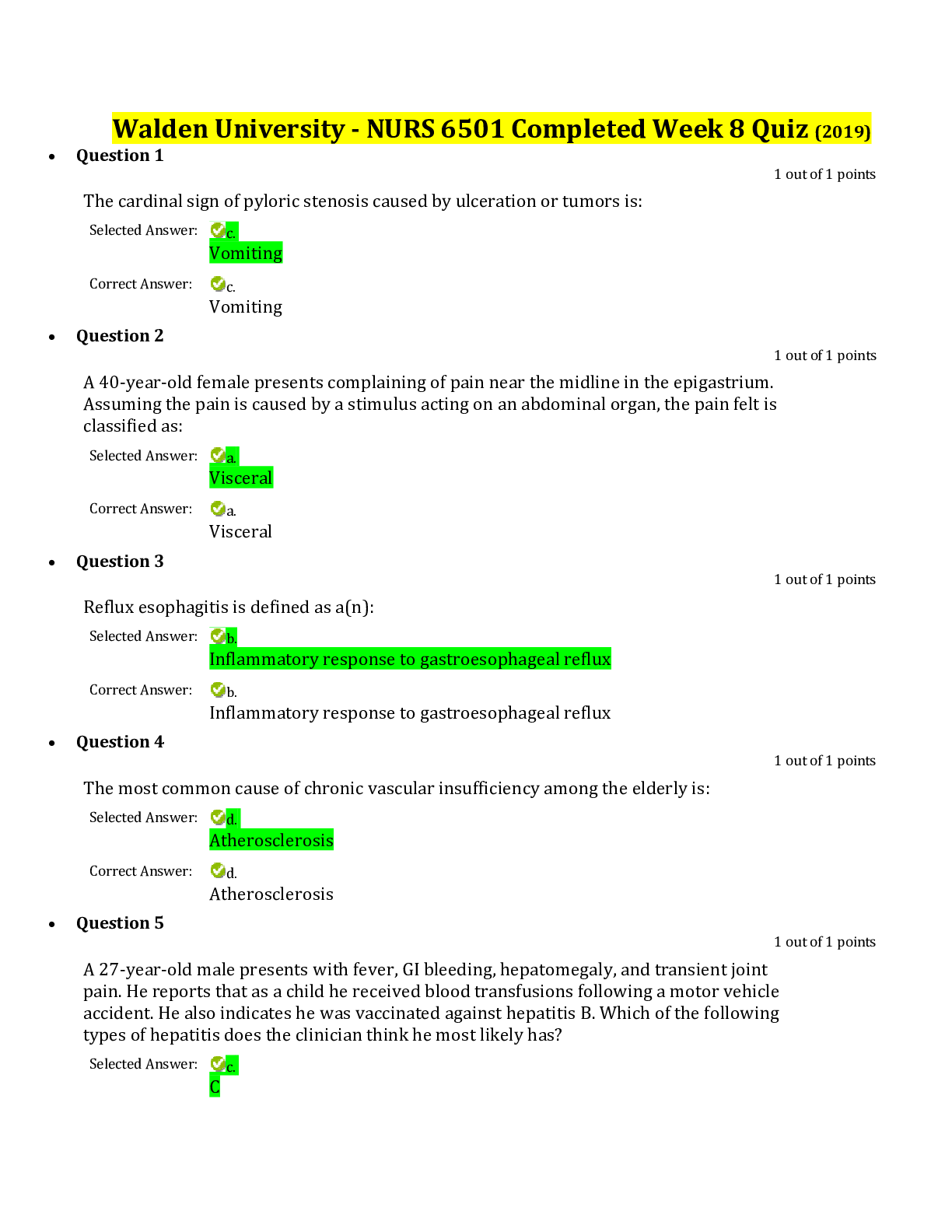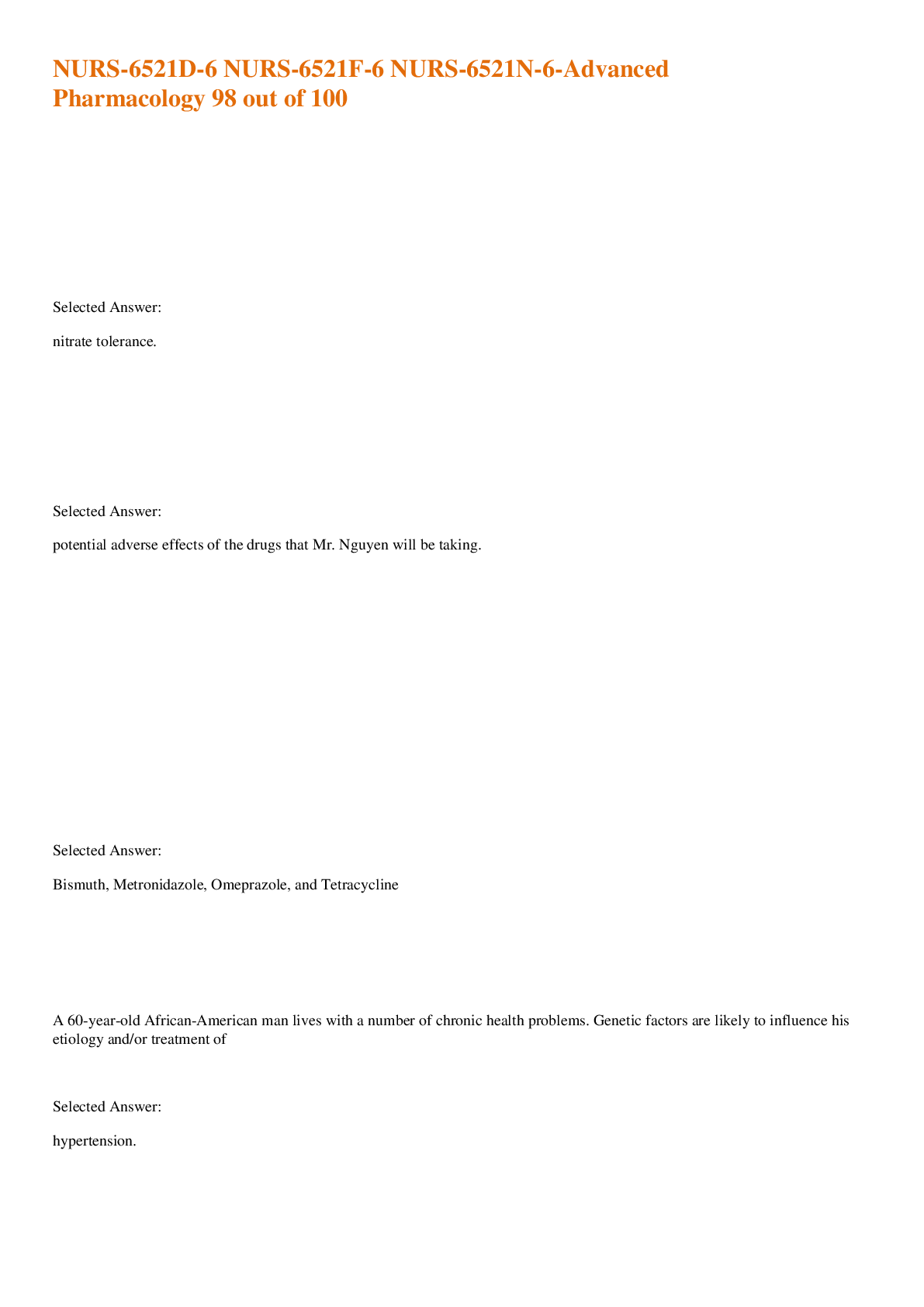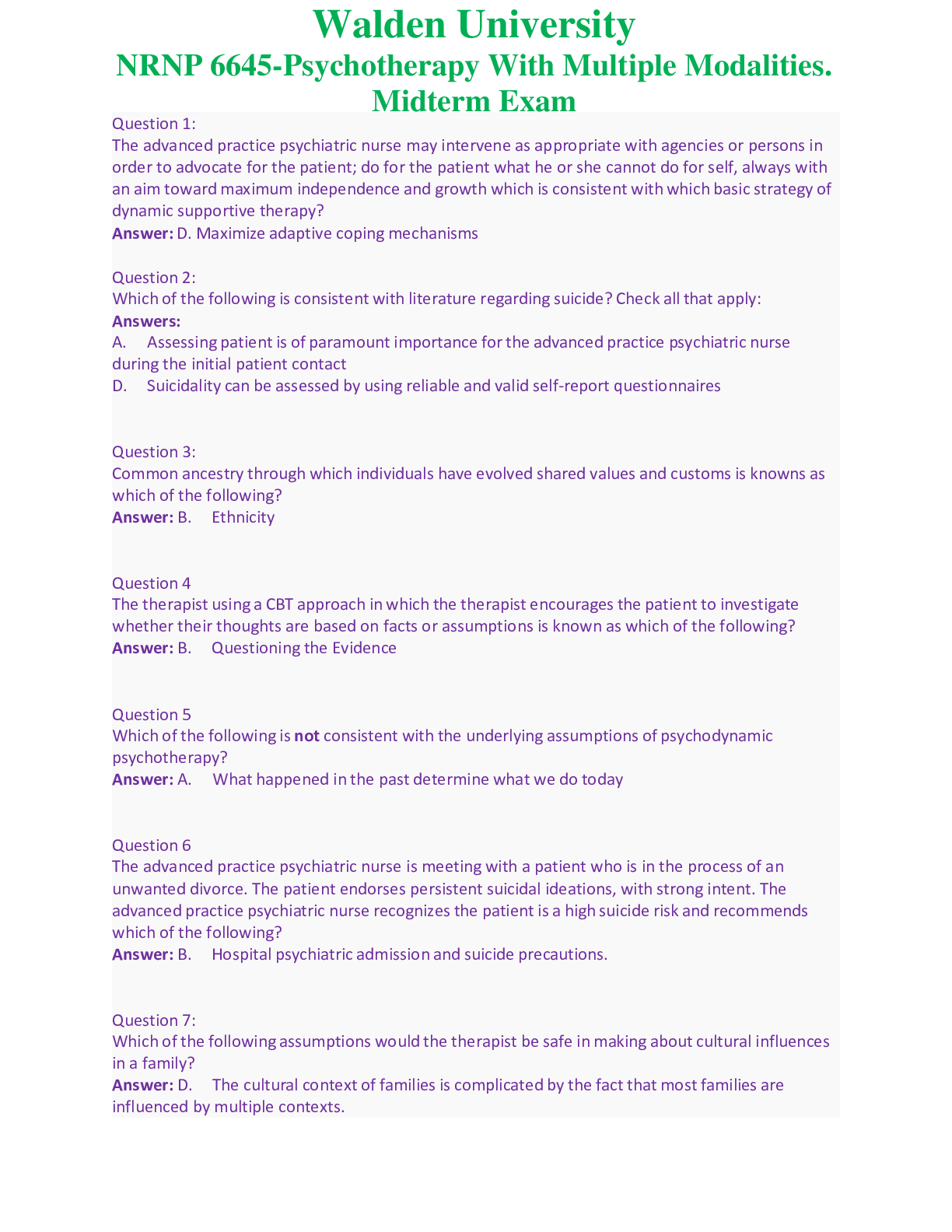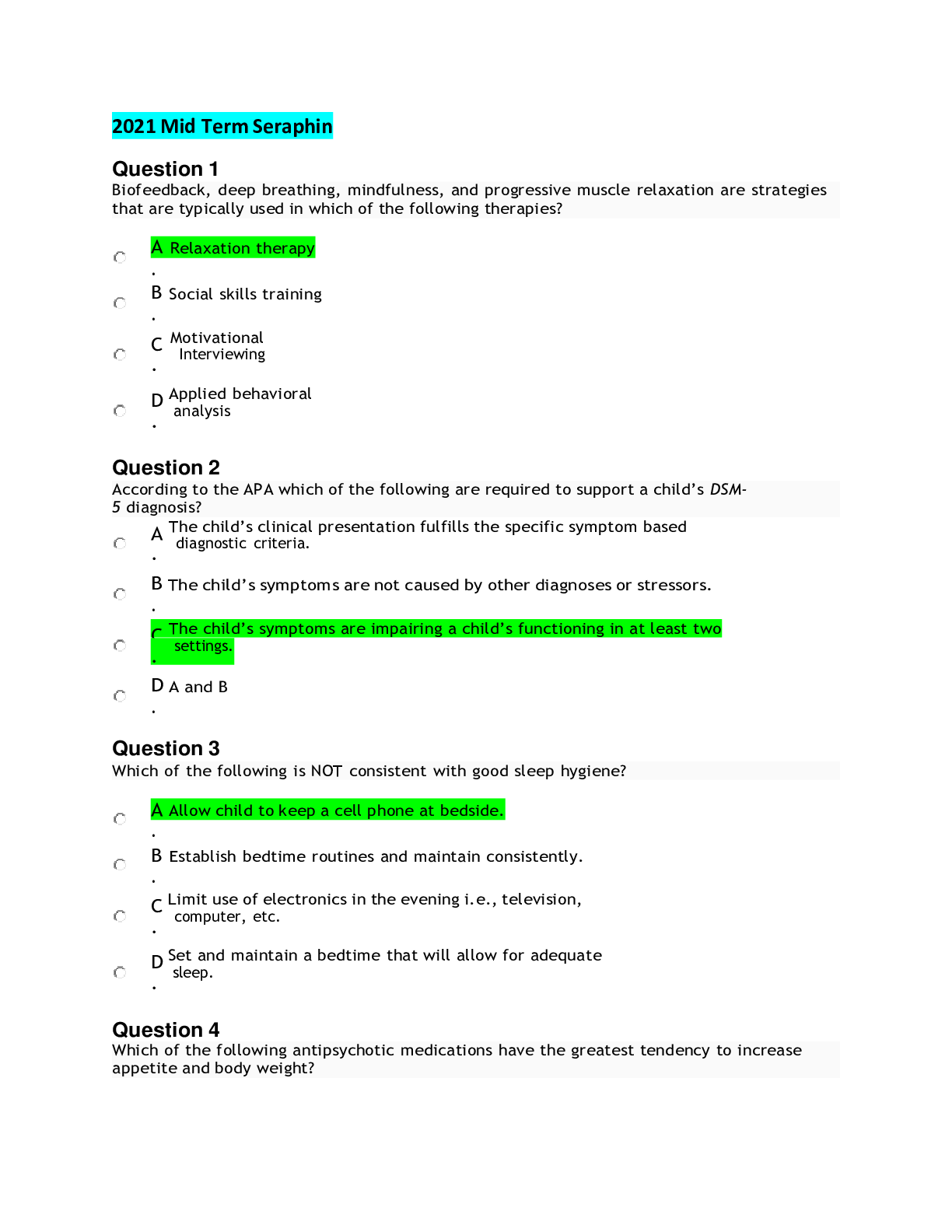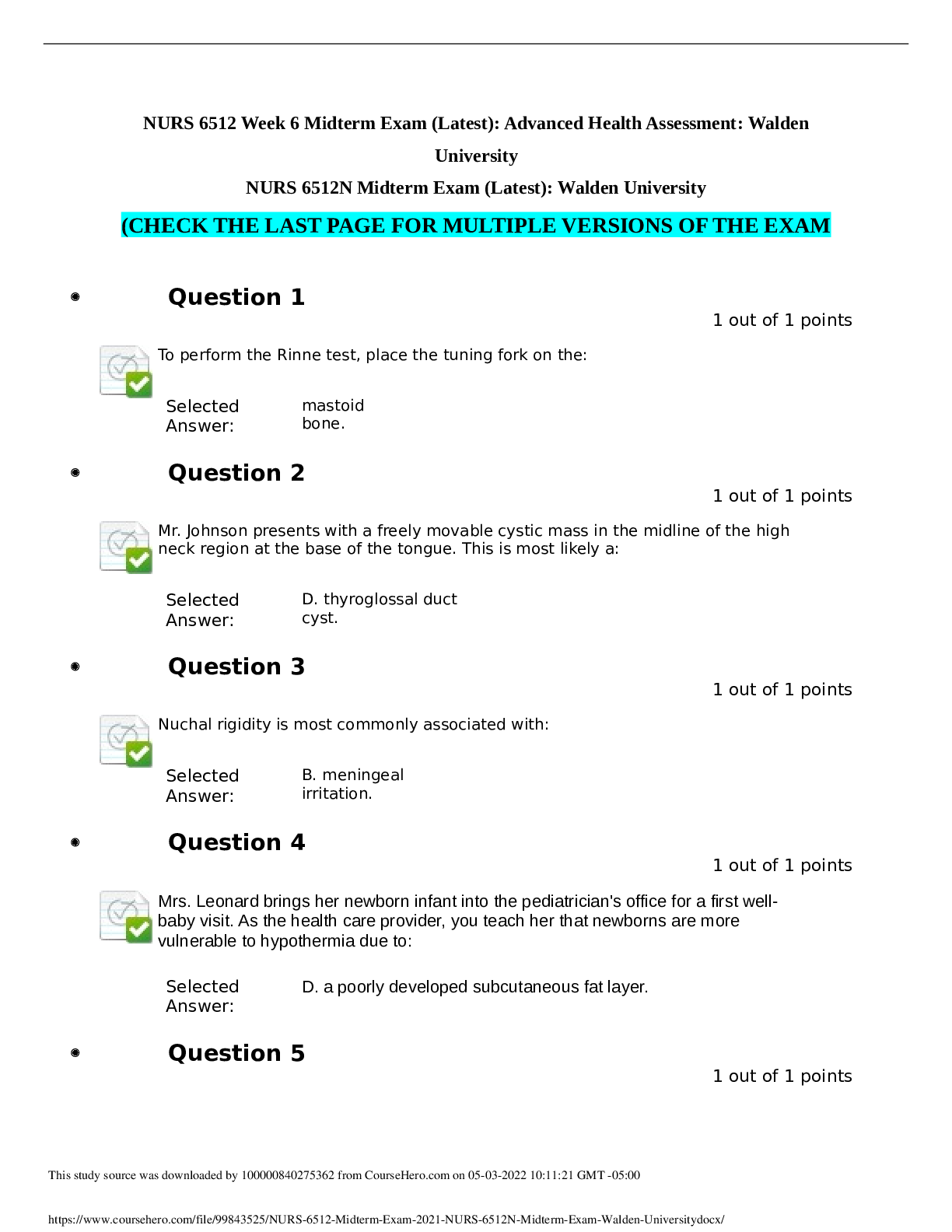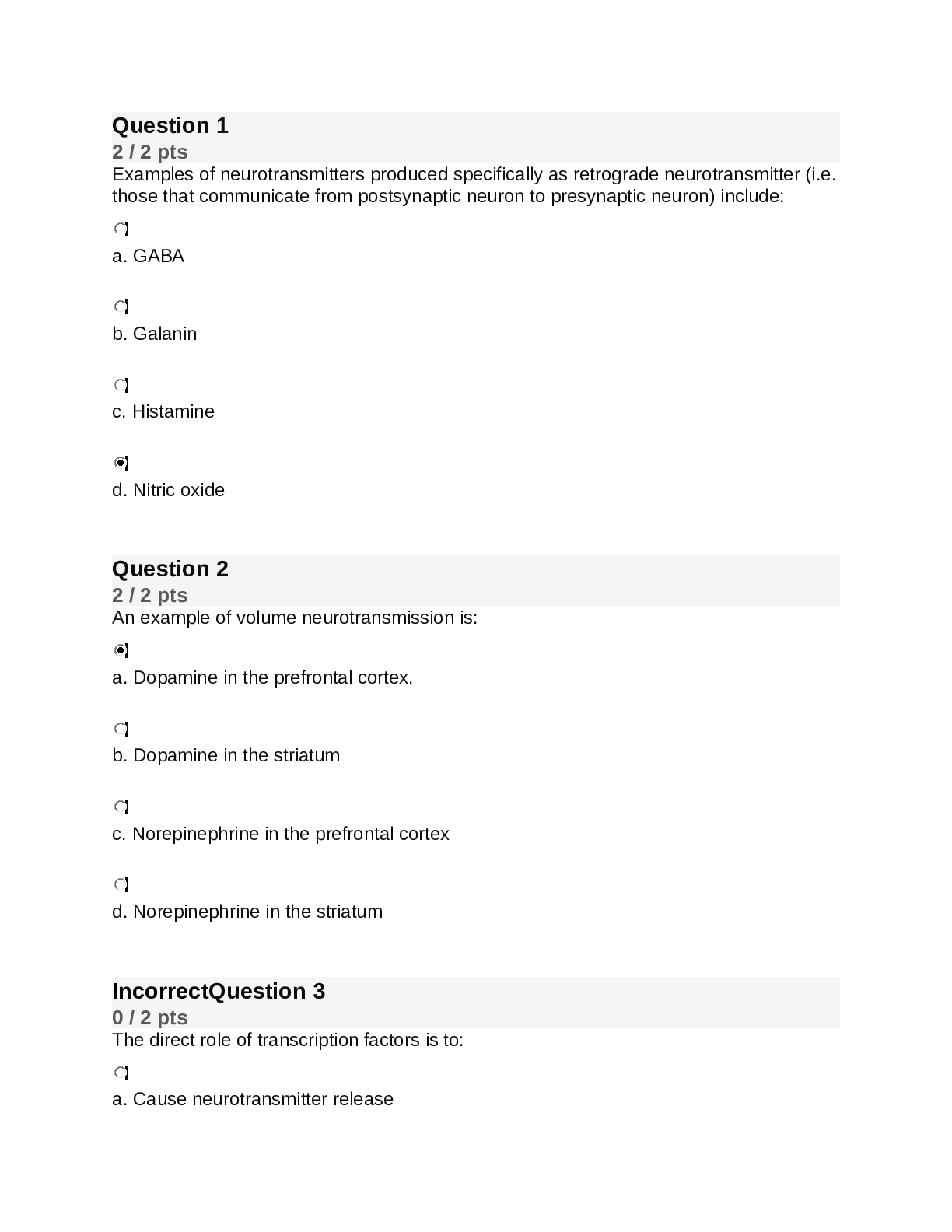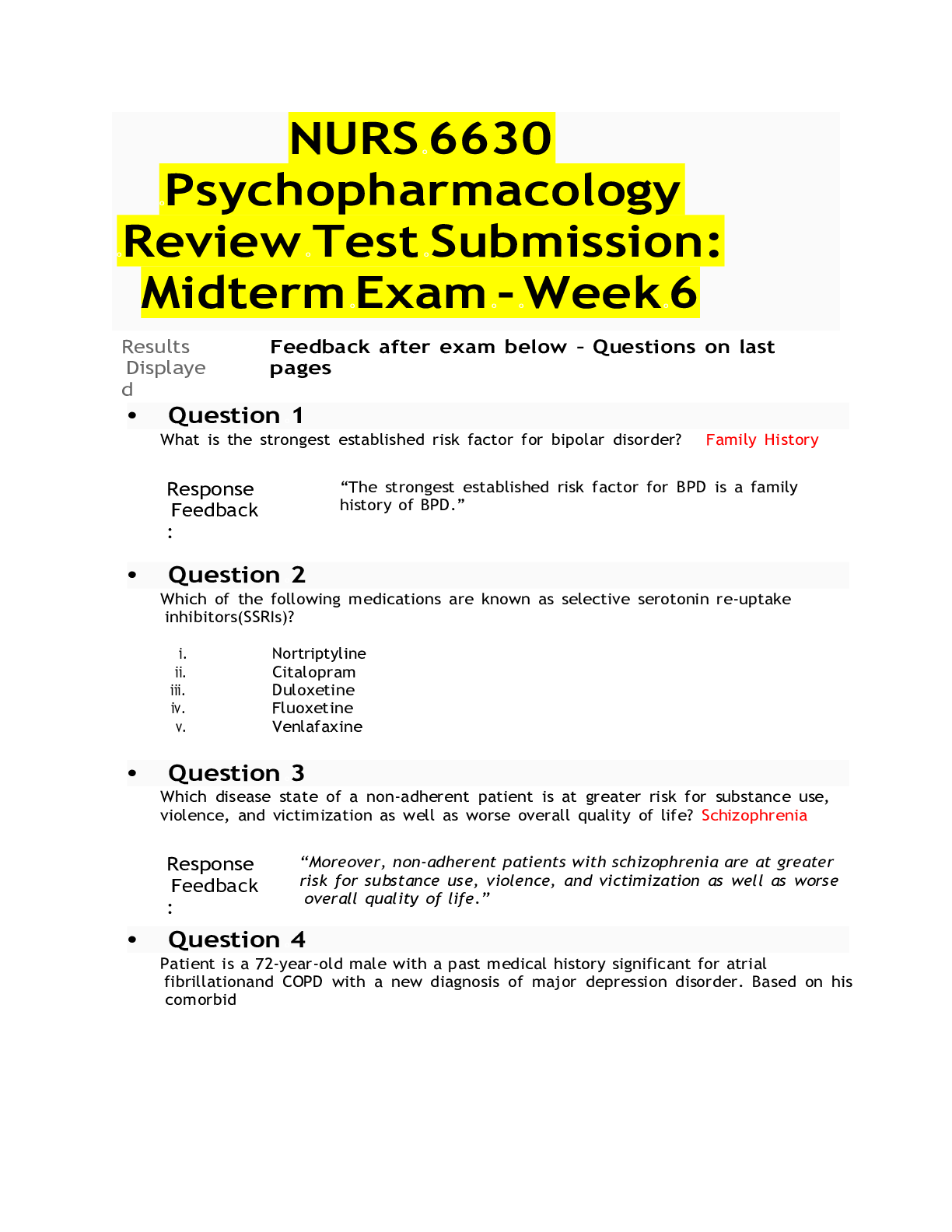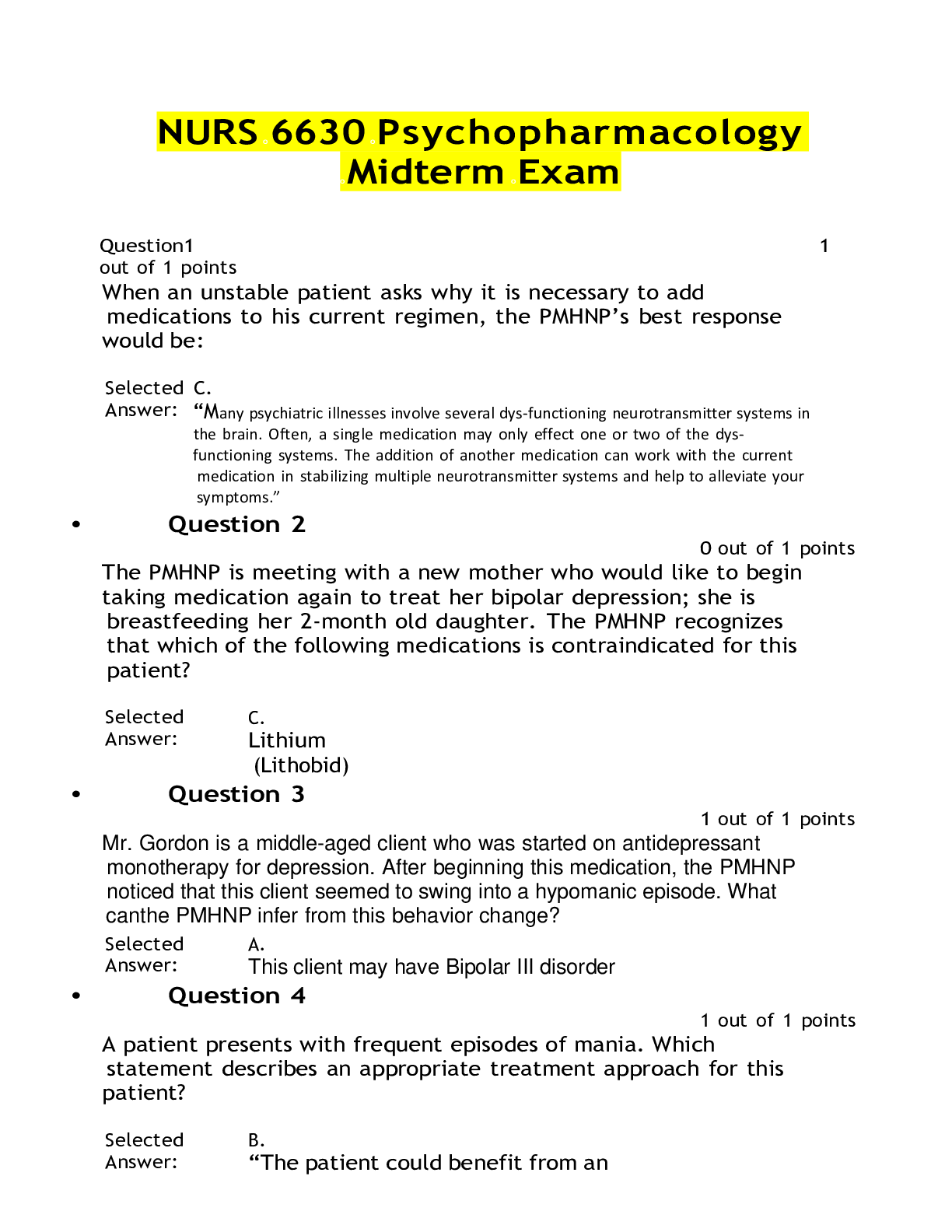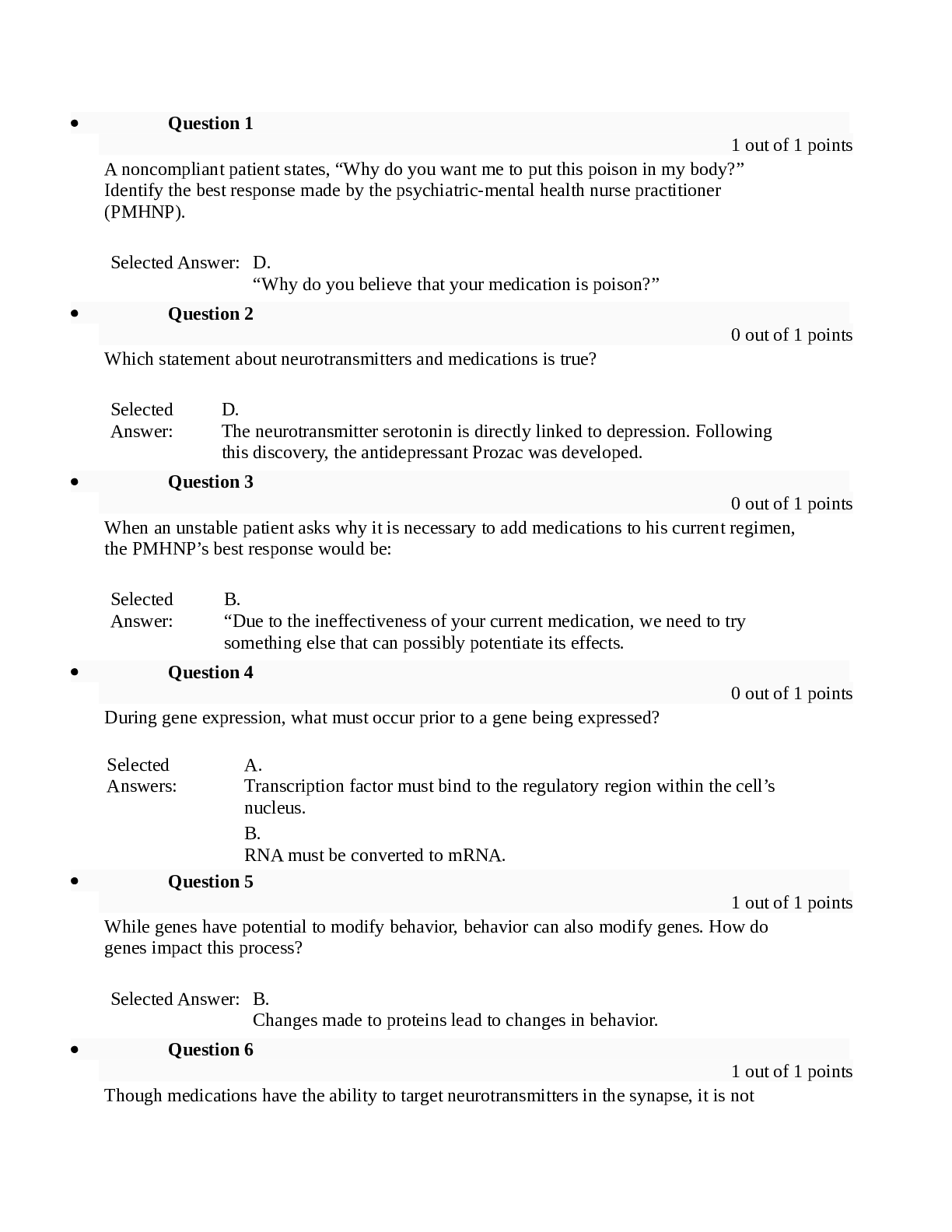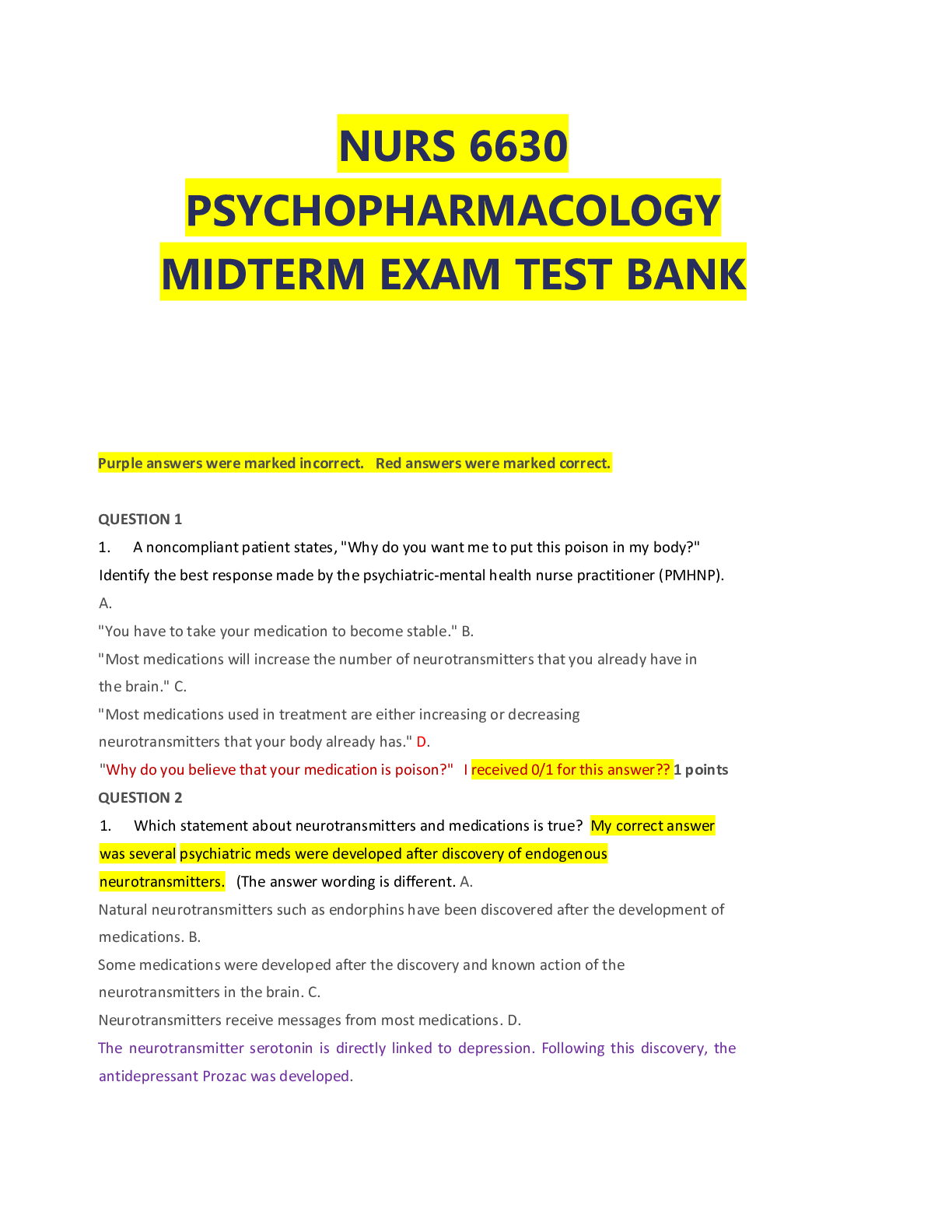*NURSING > EXAM > NURS 6630 psychopharmacology Midterm Exam - Walden University. 76 Q & A. Graded 100% Reviewed (All)
NURS 6630 psychopharmacology Midterm Exam - Walden University. 76 Q & A. Graded 100% Reviewed
Document Content and Description Below
NURS 6630 psychopharmacology Midterm Exam - Walden University. QUESTION 1 1. A noncompliant patient states, “Why do you want me to put this poison in my body?” Identify the best response made b... y the psychiatric-mental health nurse practitioner (PMHNP). A. “You have to take your medication to become stable.” B. “ Medications work by increasing the types of neurotransmitters produced by the human brain.” C. “Most medications that work in the brain will result in restoring an imbalance of one or more neurotransmitters that your body already produces helping to alleviate your symptoms .” D. “Why do you believe that your medication is poison?” 1 points QUESTION 2 1. Ms. Hill is currently being treated for schizophrenia but has stopped taking her medications due to some side effects she claims she was experiencing. She presents to the clinic today with worsening symptoms. She is experiencing anhedonia, agitation, attentional impairment, and affective blunting. Which one of the symptoms mentioned is considered a positive symptom of schizophrenia? A. Anhedonia B. Agitation C. Attentional Impairment D. Affective Blunting 1 points QUESTION 3 1. Which statement about neurotransmitters and medications is true? A. Endorphins were discovered before morphine which lead to the use of the opioids for pain control. B. Several psychiatric medications have been developed after discoveries of endogenous neurotransmitters and defining their function in the brain. C. Medications work by sending messages to neurotransmitters enabling them to work more effectively. D. An imbalance of serotonin has been directly linked to depression. Following the discovery of this neurotransmitter, pharmacologists were able to develop a well-known drug- Prozac as the first medication used to restore the balance of serotonin. 1 points QUESTION 4 1. When an unstable patient asks why it is necessary to add medications to his current regimen, the PMHNP’s best response would be: A. "More often than you would think, multiple medications should always be tried together to see what happens.” B. “Due to this being your first hospitalization after starting medication treatment for the first time in your life, the only way to effectively manage your symptoms is by adding additional medications in hopes that it will work for you." C. “Many psychiatric illnesses involve several dys-functioning neurotransmitter systems in the brain. Often, a single medication may only effect one or two of the dys-functioning systems. The addition of another medication can work with the current medication in stabilizing multiple neurotransmitter systems and help to alleviate your symptoms.” D. “I understand your concerns. Often times, it is necessary to switch medications after short periods of time to better manage your symptoms. We will discontinue your current regimen and start another single drug agent.” 1 points QUESTION 5 1. During gene expression, what must occur prior to a gene being expressed? A. Transcription factor must bind to the regulatory region within the cell’s nucleus. B. RNA must be converted to mRNA. C. The coding region must separate from the regulatory region. D. RNA polymerase must inhibit the process of changing RNA to mRNA. 1 points QUESTION 6 1. While genes have potential to modify behavior, behavior can also modify genes. How do genes impact this process? A. Genes impact neuron functioning directly. B. Changes made to proteins lead to changes in behavior. C. Neurons are able to impact protein synthesis. D. Genes impact the DNA of a cell, leading to changes in behavior. 1 points QUESTION 7 1. Though medications have the ability to target neurotransmitter release into the synapse by the presynaptic neuron it is not always necessary. The PMHNP understands that this is because: A. Neurotransmission occurring along the axon is normally at a level to prevent symptoms of mental illness and rarely require augmentation from medication therapy. B. Neurotransmission is minimally affected by medication therapy when compared to the baseline neurotransmitter release of a resting neuron. C. Neurotransmitters can spread by diffusion. D. The post synaptic neuron can produce and release its’ own neurotransmitter allowing it to function properly. 1 points QUESTION 8 1. Why is the cytochrome P450 enzyme system of significance to the PMHNP? A. The kidneys play a role with excretion of the medication, and if a patient has kidney damage, the dose must be increased to be effective. B. The bioavailability of the medication after it passes through the stomach and liver can be altered. C. The medication’s chemical composition changes when it comes in contact with the acid in the stomach. D. The CYP enzyme system is a steady and predictable process that prescribers must understand to treat conditions effectively. 1 points QUESTION 9 1. It is important for the PMHNP to recognize differences in pharmacokinetics to safely prescribe and monitor medications. Which of the following statements does the competent PMHNP identify as true? A. About 1 out of 5 Asians requires lower-than-normal doses of some antidepressants and antipsychotics. B. The term polymorphic refers to the body’s ability to break a medication down several ways, and this patient may require higher doses of certain antidepressants and antipsychotics. C. About 1 out of 30 Caucasians requires lower doses of some antidepressants and antipsychotics. D. Most enzyme pathways do not have interactions between the newer medications. 1 points QUESTION 10 1. As it relates to G-protein linked receptors, what does the PMHNP understand about medications that are used in practice? A. Most medications that act on G-protein linked receptors have antagonistic traits. B. The majority of medications used in practice are full agonists and are used to stimulate the body’s natural neurotransmitters. C. Most medications act as partial agonists because they allow the body to use only what is needed. D. Medications used in practice may act as inverse agonists if the dosage is too high. 1 points QUESTION 11 1. The PMHNP is considering prescribing a 49-year-old male clozapine (Clozaril) to treat his schizophrenia and suicidal ideations. The PMHNP is aware that which factor may impact the dose needed to effectively treat his condition: A. The patient smokes cigarettes. B. The patient has hypertension. C. The patient has chronic kidney disease, stage 2. D. The patient drinks a cup of coffee a day. 1 points QUESTION 12 1. A patient is diagnosed with bipolar disorder and is currently taking carbamazepine (Tegretol), aripiprazole (Abilify), and melatonin. The PMHNP has just written an order to discontinue the carbamazepine (Tegretol) for drug-induced thrombocytopenia. The PMHNP is aware that his next best action is to: A. Alert staff to possible seizures B. Write an order for a different mood stabilizer C. Decrease the amount prescribed for aripiprazole (Abilify) D. Explain to the patient that it will be more difficult to control his temper 1 points QUESTION 13 1. A patient recently transferred following a suicide attempt has a history of schizophrenia, depression, and fibromyalgia. He is currently taking Amitriptyline (Elavil), Lisinopril, aspirin, and fluoxetine (Prozac). When assessing the psychiatric medications and the reason for admission, what would be the best course of action for the PMHNP with this client? A. Review Amitriptyline (Elavil) level B. Order a STAT BUN/SCr C. Asses the client for nystagmus D. Order a STAT platelet, D-dimer, and PT/INR 1 points QUESTION 14 1. A patient with schizophrenia is given an inverse agonist that acts on the receptor 5HT and neurotransmitter serotonin. What is the rationale for prescribing a medication such as this? A. To promote the availability of serotonin B. To decrease serotonin C. To indirectly increase the amount of dopamine in the body D. To help decrease the amount of serotonin and dopamine 1 points QUESTION 15 [Show More]
Last updated: 8 months ago
Preview 1 out of 36 pages
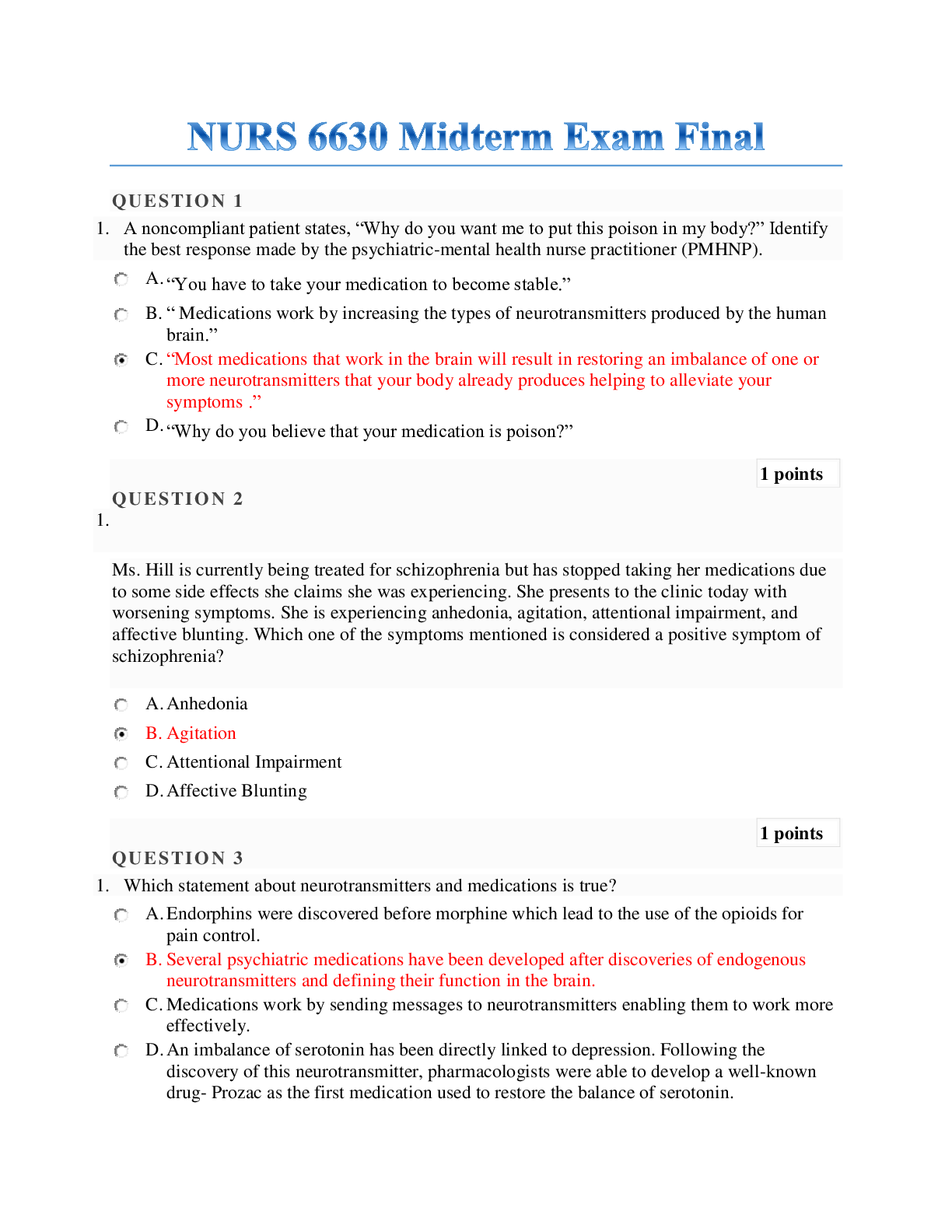
Reviews( 3 )

by Grace Alabi · 3 years ago
Thank you. by Kirsch. 3 years ago

by Kirsch · 3 years ago

by Goodie · 3 years ago
Document information
Connected school, study & course
About the document
Uploaded On
Mar 09, 2020
Number of pages
36
Written in
Additional information
This document has been written for:
Uploaded
Mar 09, 2020
Downloads
12
Views
645


